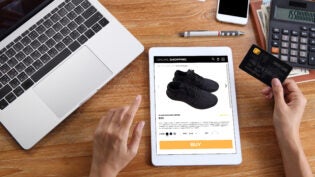5 Types of Usability Testing Methods for Websites and Businesses
By: Victoria Hill

Understanding and properly executing user testing is essential to ensuring that your company’s website is easy to use. You’ll easily lose customers if you’re unaware of and doing nothing about how complicated it is to work with your company.
Usability testing methods for websites are all about finding out what the experience of an end user of a website is like. Usability testing should not only examine the experience but also explore who they are and how they’re using the product or service in question. The keys lie in knowing how to recruit the right participants and using the right method.
There are numerous forms of UX usability testing methods from among which you can choose. The following are five of the most common types out there:
1. Focus group testing
Focus groups are a very common means of testing. They involve arranging for a group of users to come together. These users will then talk about any issues they encountered using the website. This type of test will usually require group collaboration for a few hours while a moderator watches.
2. Various types of usability testing
When it comes to usability testing, information is acquired through the observation of a real website visitor. This test will help to determine if the app or website functions as intended. It is important that a real user is used for this type of testing. This is one of the most basic testing options, and it comes in a few varieties.
Moderated usability testing will involve getting feedback from the participants, often while they are in the process of using the site. Another option is unmoderated remote usability testing, which involves observing a user’s experience with the website or app in question without being physically present. Because the observer or moderator is not present, the user often has the tendency to behave more naturally so that the test is more realistic.
3. A/B testing
A/B testing is a form of usability testing that’s used when there are two different options from among which the company is deciding. This type of testing is usually done at an early stage when an application itself is not yet complete.
Usually, this type of testing functions well if there is a decision in the air regarding two different designs. It is common to use this type of testing when a decision is being made on a proposed upgrade. Those participating in the test will try out the two options and provide information on the advantages of each.
4. Beta testing
This is also a type of testing used in situations where the website is not entirely complete in its creation. The feedback that is garnered from this type of test will be used to finalize website development.
The submission of bug reports is essential when it comes to this type of testing. Because the website is not yet complete in its creation, it is expected that some things will be wrong and will require correction before the website is officially enrolled. Testing allows the users themselves to find bugs that the creator of the site probably won’t even know about yet.
5. Survey testing
One convenient way to bring together a great body of information on user experience is through surveys. Surveys can be sent out to massive groups of people. These surveys contain questions about the desires and needs of each survey taker.
Surveys can provide many insights on a website user interface and can help with bringing together quantitative data. However, this type of testing does not allow for any direct observation of the user experience. If survey testing is decided upon among types of usability testing methods, it’s very important that survey questions are carefully thought out. It’s also important that subjects that are taking the survey fit into the company’s target demographic for website production and design.
2802 Views












